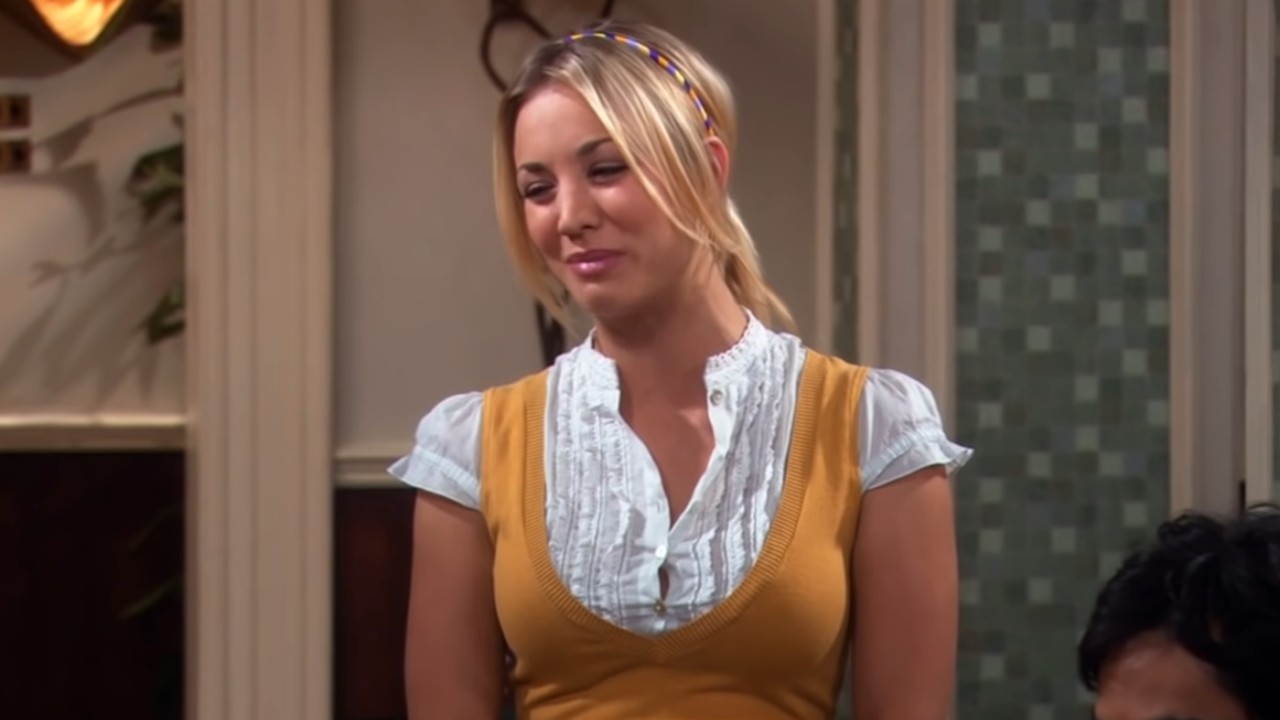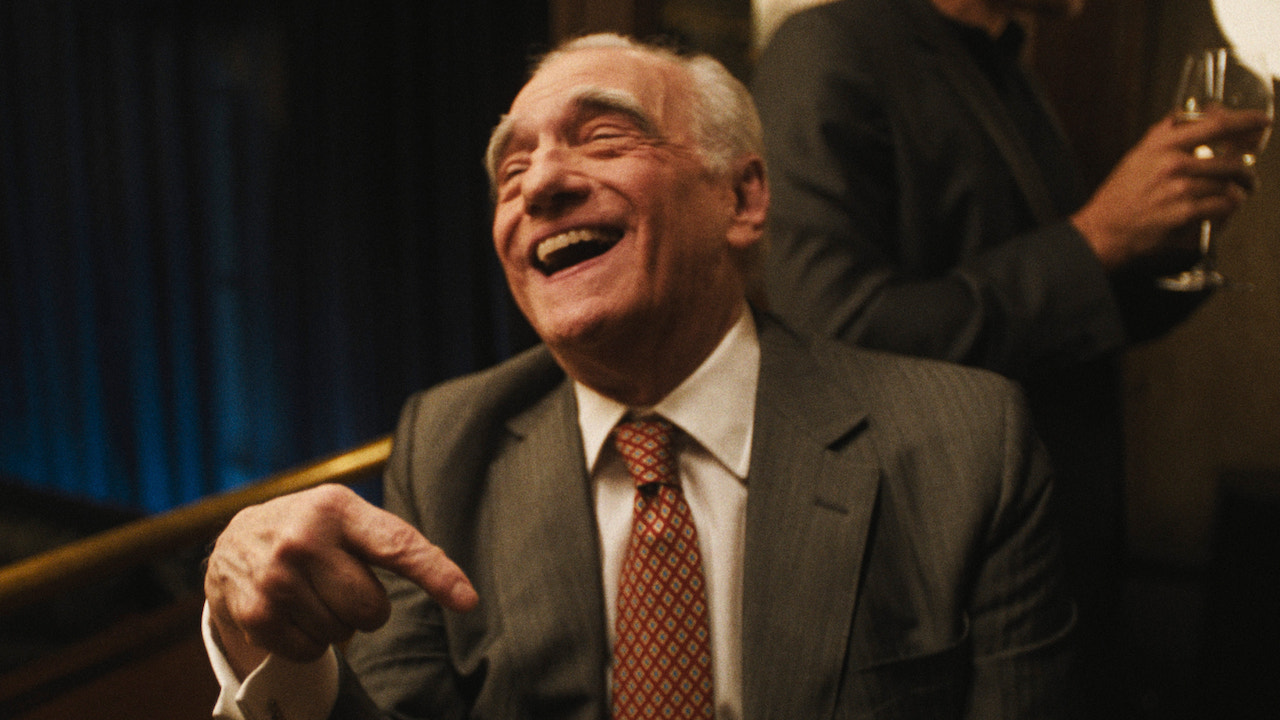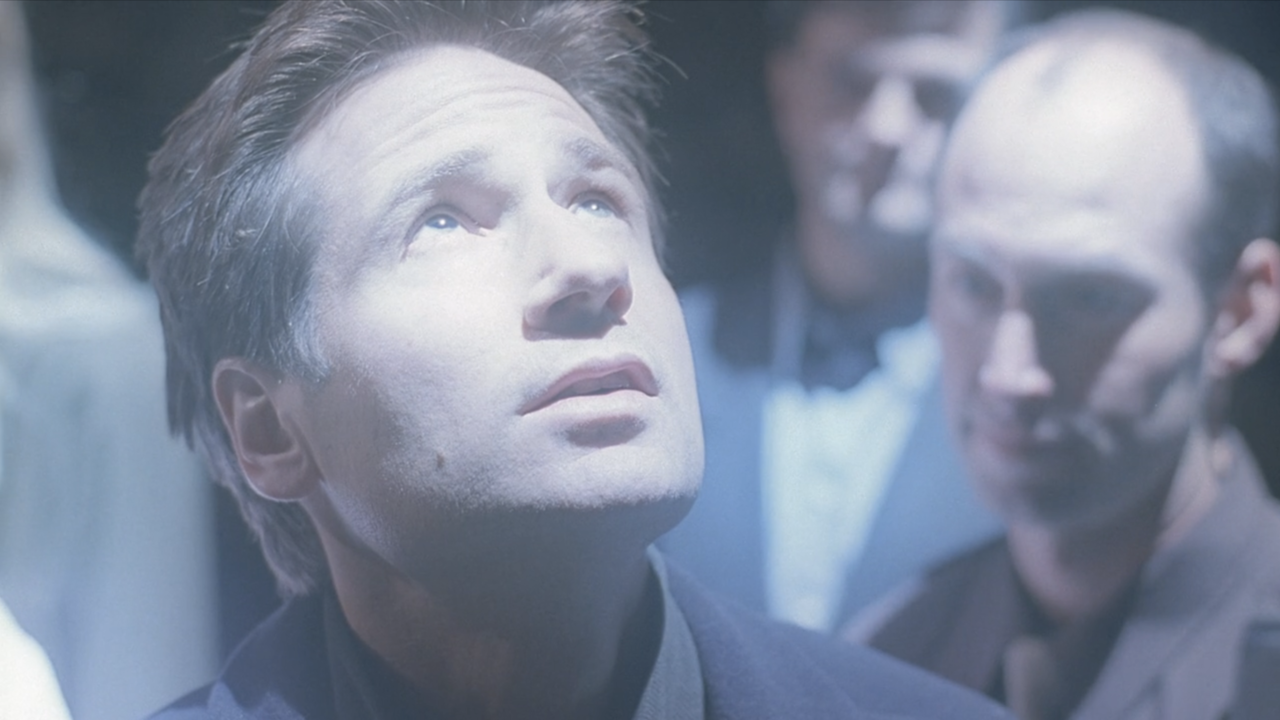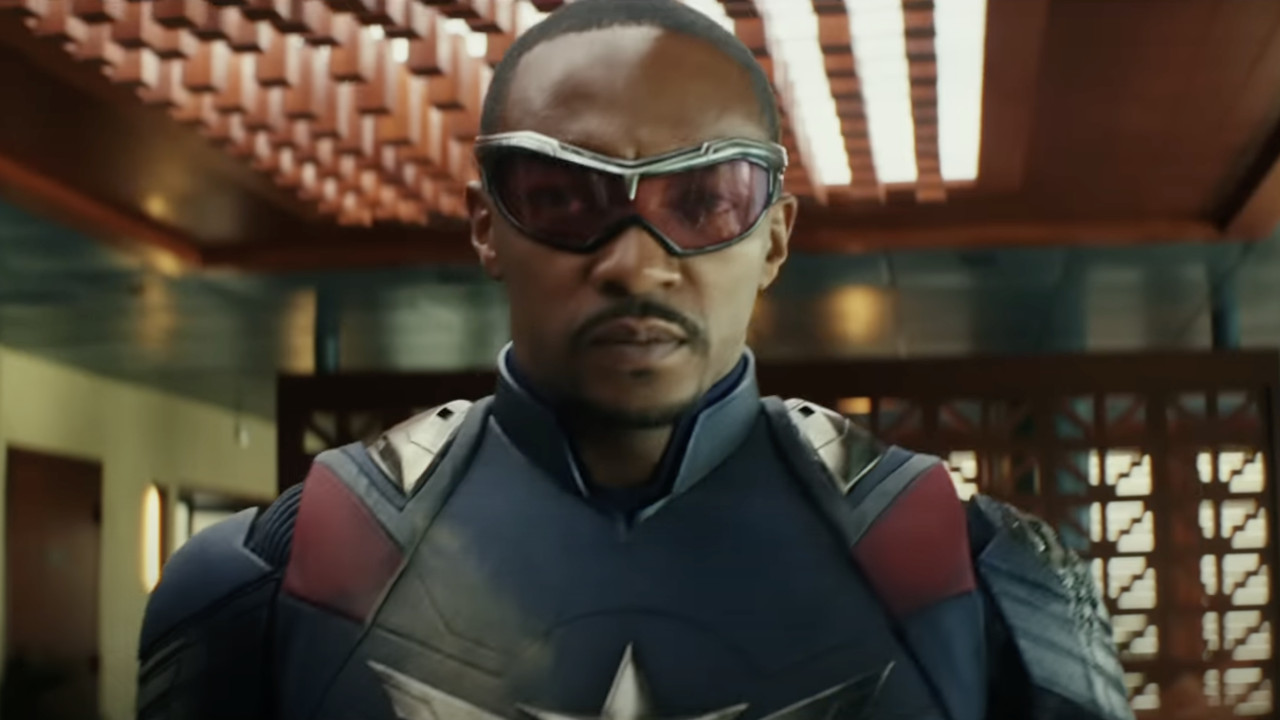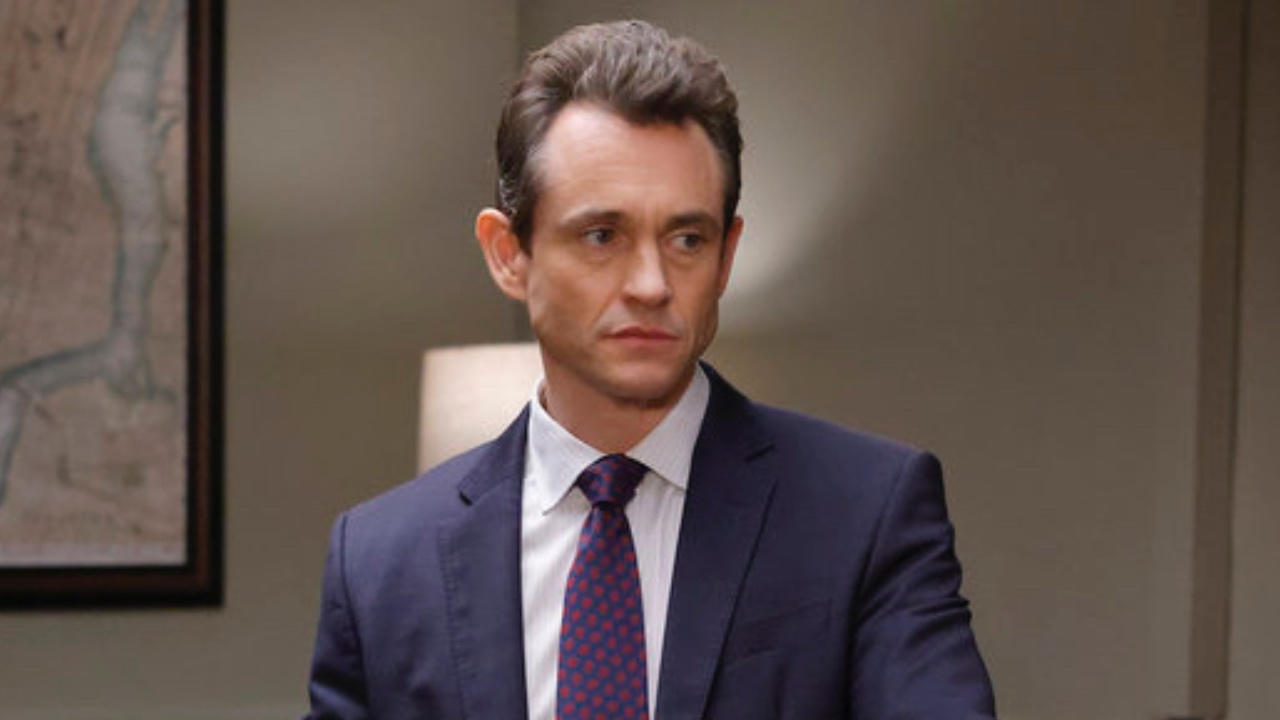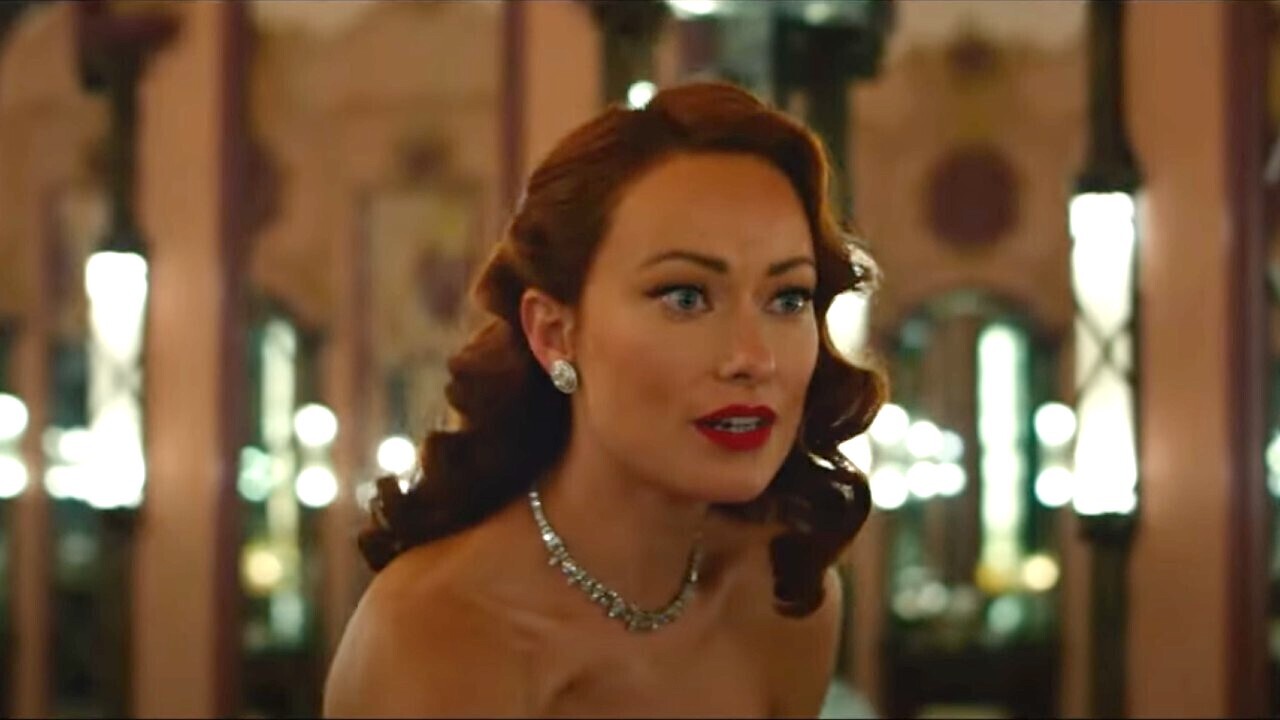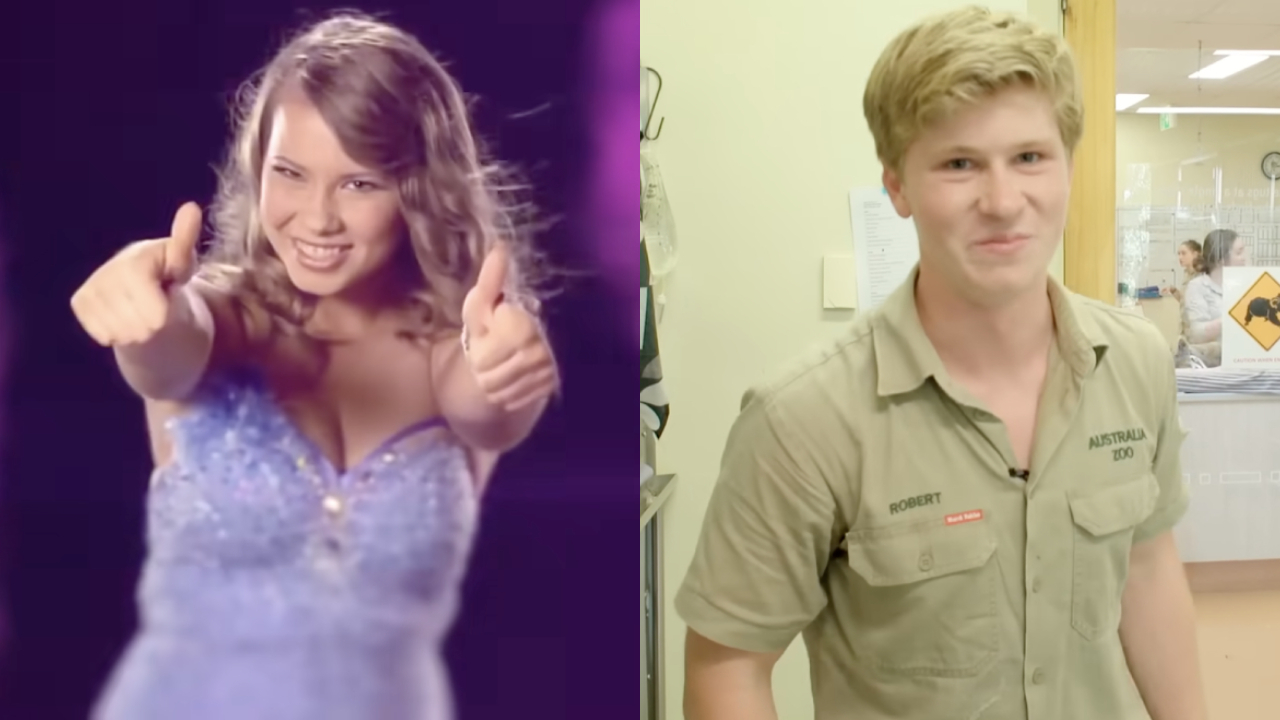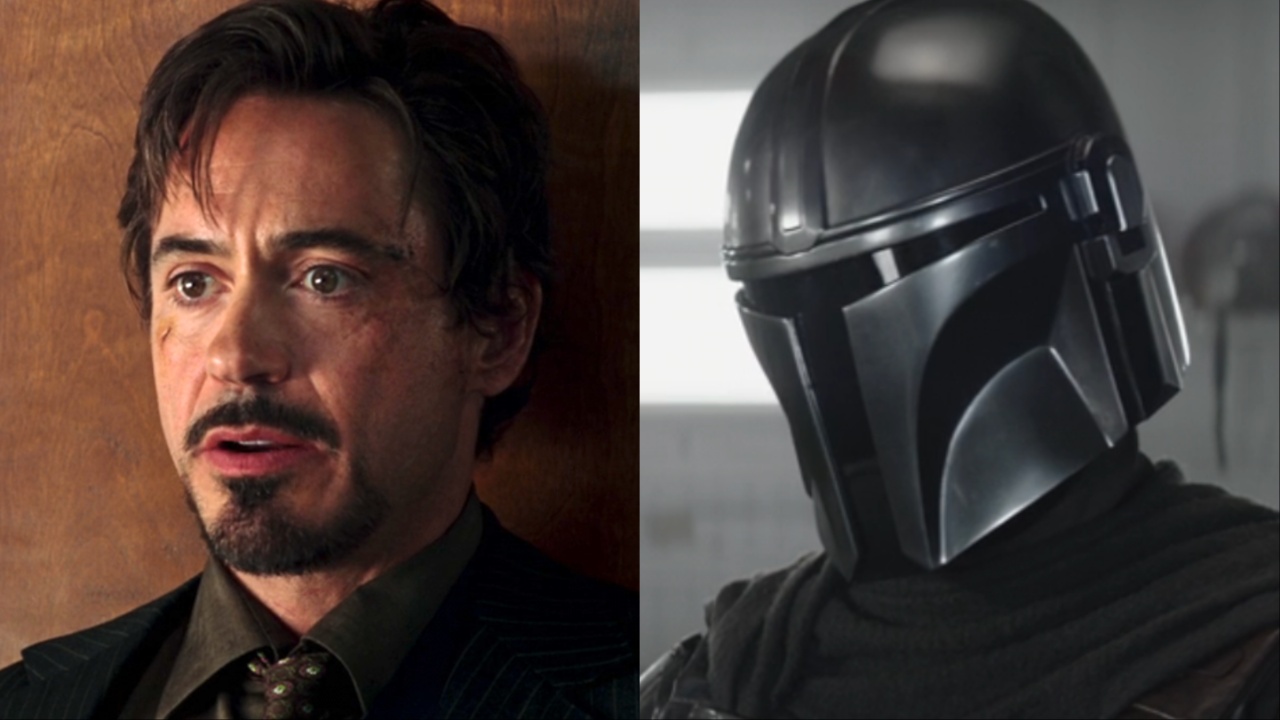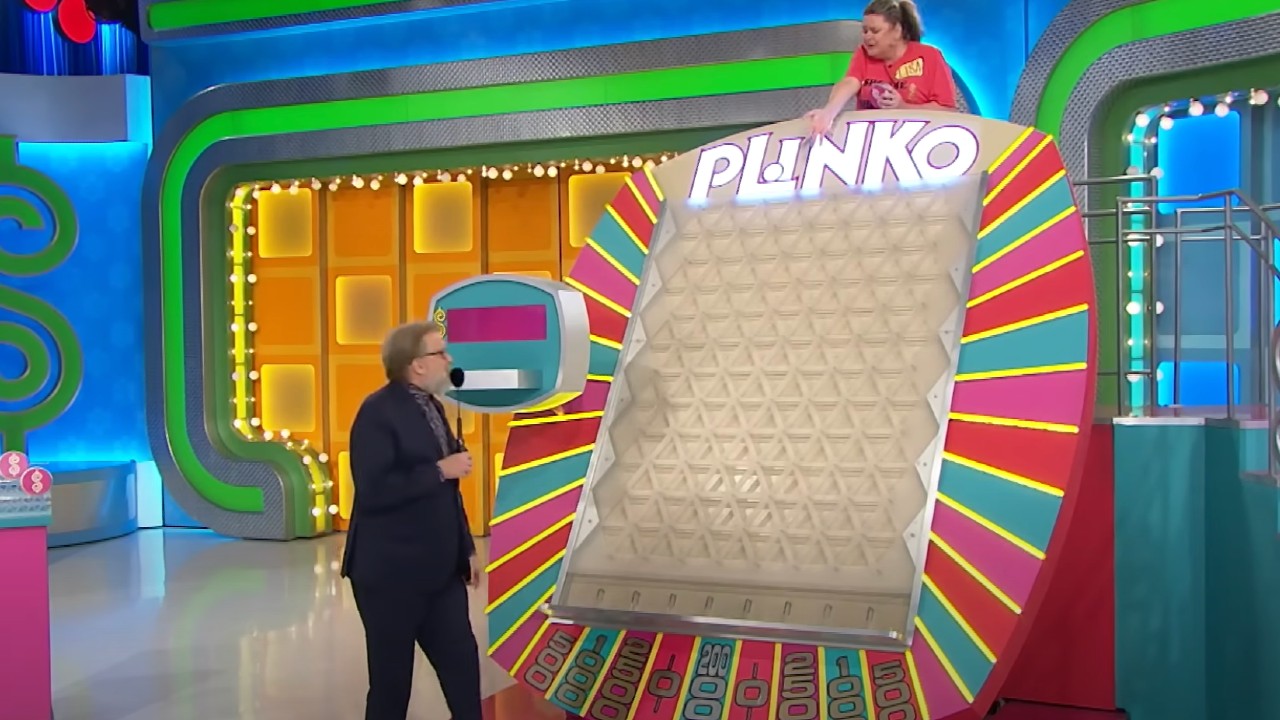On The Set Of Ender's Game: Alien Worlds, Mind Games And Bringing Ender Wiggin To Life
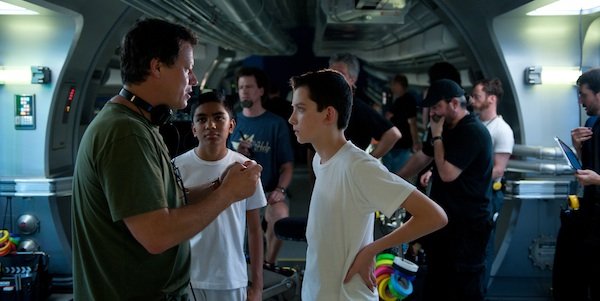
Everyone has the recurring childhood daydream that one day someone might show up and tell you that you're extraordinary and destined for great things.In books this might involve some fantastical, fictional location where only the most gifted and special children get to go to achieve said greatness. For Harry Potter, it was Hogwarts. For Ender Wiggin, it's a space-set orbiting Battle School where other kids are preparing to fight a war against an alien race called the Formics. As an avid reader and a child at heart, both fictional locations are high on my list of imaginary worlds I would love to visit in real life-- and, in the case of Battle School, I actually got to go there.
Well, getting to walk through pieces of the Ender's Game movie set is probably the closest I'll ever get to fulfilling that dream, which admittedly, does not go all the way back to my childhood, but about a decade ago when I first read Orson Scott Card's novel. Getting to meet the cast -- which included a rather surreal encounter with Harrison Ford -- speak with the director, and hear the stunt coordinator discuss the challenges of planning and executing the zero gravity scenes was all icing on that very geeky cake.
But we're getting ahead of ourselves here. For those who haven't read Orson Scott Card's book, Ender's Game is set in the future in an era that has seen one major war with the Formics and is anticipating another. The story follows Ender Wiggin (Asa Butterfield), a boy who's selected to attend an orbiting Battle School where other children are training for the coming war. Harrison Ford plays the role of Graff, the colonel who's observing Ender at the Battle School in the hopes that Ender is the one they've been waiting for to lead their army against the Formics.
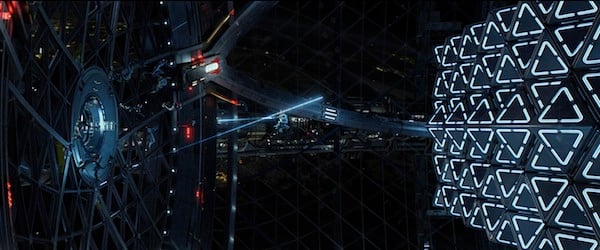
As much as I'd like to say that my trip to the Ender's Game set began with an International Fleet sponsored launch into space where I was brought aboard the mentioned Battle School and suited up for a tumble through the Zero G Battle Room, it was actually more of a jet flight south last year, courtesy of Summit, to New Orleans where the film was in production. Joined by other members of the press, we were transported to the set and ushered into a conference room, where a tasty continental breakfast was waiting for us. As tempting as the coffee and pastries were, my attention was instantly drawn to the walls, which were all papered with storyboards of the film, revealing black-and-white sketches of many familiar moments from the book, almost as though Ender's Game had been turned into one big not-yet-colored-in comic book.
Now, it needs to be said that this was Spring of 2012. The most we'd seen from the movie by that point were a few vague set photos, so this was our first real look at what they were trying to do for the film. One string of images showed the altercation Ender gets into with another launchie. Another showed Ender in class, learning about Mazer Rackham's battle. And a much more disturbing set of images showed Ender's mind game. If you recall, in the book, the children have the option to play a fantasy mind game on their tablets, which allows them to exercise their logic and decision-making skills as they attempt to overcome whatever challenge and obstacles are presented. The game gives the authorities another way to get into the minds of these kids, analyze their leadership abilities and examine their psyche based on the choices they make with each challenge. Ender becomes determined to get through the game during his time in Battle School, often revisiting it throughout the story.
Part of the game Ender plays throughout the story involves besting a giant. In the storyboards we saw on the walls, there was one set of images that showed Ender as a mouse burrowing himself into the eye of the giant. Even as a sketched illustration, it's a dark and jarring image. So, I can only imagine how they'll make that look for the film, assuming it makes it into the film. Producer Linda McDonough did mention that the fantasy "mind game" would be a part of the movie, though she specified that the altercation between Ender and the other launchie on the shuttle would not. So not everything we saw on the walls was destined to make it to screen, but it was still fascinating to view the storyboards and see how they put some of the book's memorable scenes to image. Once we'd exhausted ourselves eying the artwork on the walls, we served ourselves breakfast and sat at the table where producer Linda McDonough walked us through a slide show of concept art for the film, discussing some of the goals they had for bringing Card's story to to the big screen. As McDonough put it, "The filmmakers involved, we all sat around and thought, 'it probably took people who read this book as a kid to grow up and get enough success in Hollywood to get it made'." Fans have indeed waited decades for this movie to happen, and it's encouraging to hear that it was producer Roberto Orci's favorite book growing up, as I like to think that would have made him extra passionate about doing it justice. Orci, unfortunately, wasn't on set when we were, so we didn't get to speak with him. But listening to McDonough speak about the plans for the movie, it's evident that there was a lot of enthusiasm and optimism that went into the movie, not only in an effort to deliver a great film, but to deliver an adaptation worthy of its source material.
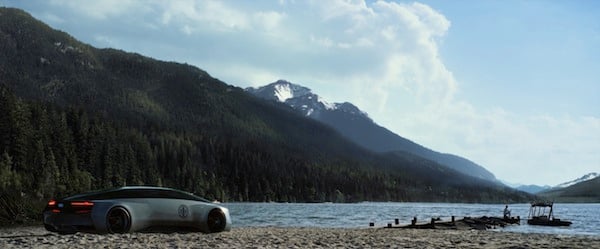
While a big part of Ender's Game is set in space, Earth also plays its part, and one of the things we learned about the futuristic setting on Earth is that the planet is in a "post-oil economy." Concept art revealed pictures of the Wiggin home, which might be described as both modern and earthy, with plants, wood and greenery worked into a home design that seemed natural but very modern. Later during the tour, when we spoke with production designers Sean Haworth and Ben Procter, they spoke a bit about Gavin Hood's vision of the future as it relates to Earth, and as they put it, Gavin believed that "Earth would be a place worth saving." They went on to say that, "It would be a reason for everybody to make these kinds of commitments in leaving family behind and going off and sacrificing your life to save this beautiful place. Otherwise what's the point?"
CINEMABLEND NEWSLETTER
Your Daily Blend of Entertainment News
It makes sense, when you consider the alternative, which might be a more dystopian future where earth is on its last legs. As the production designers put it, the kids need something to be homesick about and they need a reason to fight. A dystopian vision of the future probably wouldn't do that, but a planet that's healthy and thriving might. They also mentioned working with Audi on the design for a futuristic vehicle.
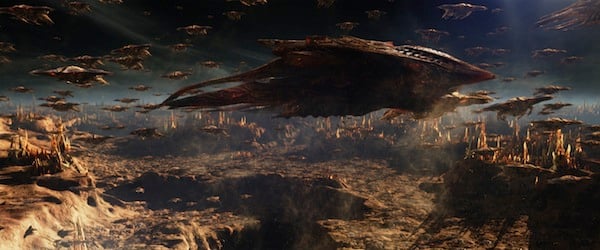
The art we saw of the Formic worlds had its own kind of beauty in a strange way. In the book, the Formics are nicknamed "Buggers," which might be a derogatory term for the enemy, but looking at the designs for some of the Formic settings, the term "bug" seems fitting, as there are peaky looking ant-hill-like structures and dark, webby backdrops that set the scene for humanity's enemy. What we saw of the alien worlds was definitely alien in its strangeness, but there's an organic look to it, as though everything in their world comes from natural resources. I think Linda mentioned that their ships were designed to look like they were made from from resin and saliva. There's definitely beauty to it all, in its own alien way, and that was intentional, as it helps us understand the bigger picture in this story. As the production designers put it, "War is the tragic part of the whole thing. It's not just a simplistic enemy against us." It sounds like we're meant to see that the Formics have their own way of life, their own culture and maybe even their own artwork. All of that was kept in mind when designing the Formic settings.
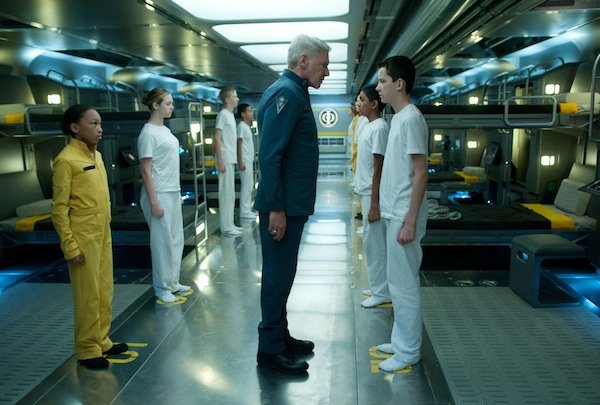
McDonough mentioned that Ender's Game might be the largest independently financed film ever put together. Going the independent route in producing the film not only ensured that it got made, but it sounds like the darker nature of the story might have been too big of a stepping stone for some of the larger studios, from a marketing standpoint.
I think the inherently darker nature of the material. The combination of young people and issues of violence has always been challenging for marketing departments, particularly at the larger studios. It was a real victory for us that The Hunger Games did so well. I think neither film is dealing with violence for exploitative reasons. They both have intellectual and sociological reasons for telling the stories that they're telling and treating young people with the respect that says, 'I acknowledge you live in a world where violence is a reality, even in your own life. In a world where Columbine happens. I'm not going to pretend that these things don't exist."
They looked at how The Hunger Games performed at the box office, and it sounds like that was further encouragement for Ender's Game in reflecting the source material's darker tone in the film.
As McDonough explained it, getting the movie made began with a pitch at Cannes, during which they showed a computer-made teaser. She showed us the CGI video of a kid suiting up, set to dramatic music, and the following words spoken between two unseen people:
"He's not ready," a woman's voice can be heard saying."You're never ready," a man's voice responds. "You go when you're ready enough.""He's too young," she says."He's a genius. He'll figure it out," the man counters."He's exhausted.""He's decisive.""You're changing the rules," she argues."In a battle with the Formics, there will be no rules," he responds."Erase the game," she orders."He's the one."
The promo sells the concept well, and had they redone it with actual footage of Asa Butterfield suiting up as Ender, it could've made an exciting teaser for the film. Alas, it was just for the pitch, but who knows? Maybe it'll be included in the bonus features on the inevitable Blu-ray.
After filling our eyes with concept art and commentary on the plans they had for the adaptation, we were primed and ready to see the set. We left the office area and headed into the warehouse,where we were treated to the sight of a huge green screen and a large wooden loft platform area. Across the floor, a space ship sat in the corner. We were told that this ship was Mazer Rackham's ship for the first war. Seeing it set aside reminded me of the old Battlestar Galactica Vipers that were on display in the pilot episode of the series. It's a relic from an old war, but one that isn't over. All of this has happened before, and all of it will happen again… Our set tour also included a partial Battle School corridor, and the kids' dorm, which consisted of neat rows of metal bunk beds much like you might expect to see in futuristic military barracks. The beds had stiff foam-like mattresses and there were little stools that slid into the walls, where there were also cabinets for them to store their things. Everything was very neat and tidy, but there was a slightly used to look to things, particularly with the walls and floors in the corridor, giving off the impression that the battle school is maintained well but has been around for a while, having been subjected to many kid-sized hands and feet throughout its years of existence.
There was also a very creepy medical operation room, with mechanical arms and at least four operation utensils rigged up and pointed at the place where the patients' head would be positioned. Without giving away any major book spoilers, I will point out -- to those who have read the book and recall a certain character getting hurt -- that I have my suspicions as to who will end up laying on that table.
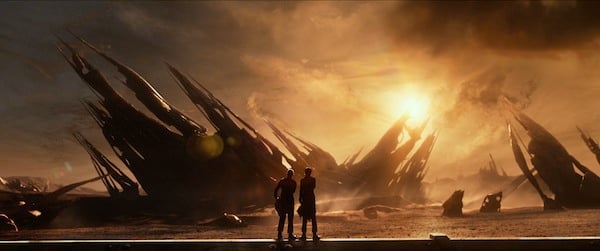
We also got to see part of the Eros set. In the book, Eros is a former Formics asteroid, which was taken over after the first war. What we saw of the set was unsurprisingly very cave-like and naturally alien in design, but at this point, man has since has taken over, adding their own technology so that they can use the asteroid for Command school. The setting comes into play in the third act of the story and - to put it intentionally vaguely for spoiler-purposes - includes an orchestra-like setting that's used in military operations.
The scene we watched being filmed was on the Eros set, and i got the impression Ender had only just arrived there recently, based on the conversations that took place in both scenes. It also seems like Ender has worked his way up the ranks by this point in the story. First, we watched Asa Butterfield and Nonso Anonzie, who plays Sergeant Dap in the story, meet in the cave-like corridor. Ender tells Dap he didn't expect to see him there, to which Dap responds, "Someone's got to keep you in check, sir."
The next scene shot was set in the control room overlooking the simulation area on Eros. There's a table in the center of the room and big window that allows the people in that room to see down onto the sim area. The press was situated on the floor, so we were looking up at that big window, which was still being painted on the outside, even as they were filming. We could see Ford up there, but it was easier for us to watch the monitor to see the camera's straight-shot view into the window and what was going on inside.
When Ford arrived on set, one of the first things he did was thank someone - possibly his stand-in - before getting ready to shoot the scene. In this part of the film, Graff is explaining to Ender about their current location. As he and Ender look through the window, Graff notes that the place isn't very hospitable, and goes on to tell him that they took this place from the Formics twenty-seven years after Rackham's victory. They "flushed them out" like they were flushing rats from a sewer and "drove them back to their home planet." They did a couple of takes of that, and I think at one point, Ford slipped up a line, but for the most part, each take was the same for the actors. They did change up how they shot the scene, slowing down the zoom to the window and at least one time, shooting the scene without zooming into the window.
And that pretty much covered the morning portion of our visit to the Ender's Game set. In the next report, I'll share some comments from the cast and director Gavin Hood, and talk about the hand and eye contact I had with Harrison Ford.

Kelly put her life-long love of movies, TV and books to greater use when she joined CinemaBlend as a freelance TV news writer in 2006, and went on to serve as the site’s TV Editor before joining the staff full-time in 2011 and moving over to other roles at the site. At present, she’s an Assistant Managing Editor who spends much of her time brainstorming and editing features, analyzing site data, working with writers and editors on content planning and the workflow, and (of course) continuing to obsess over the best movies and TV shows (those that already exist, and the many on the way). She graduated from SUNY Cortland with BA in Communication Studies and a minor in Cinema Studies. When she isn't working, she's probably thinking about work, or reading (or listening to a book), and making sure her cats are living their absolute best feline lives.
